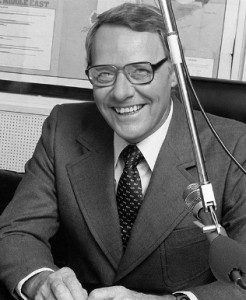
There was only one thing wrong, that night. The appetisers were tantalizing, the steaks exquisite. The bay window in front of our table gave us a stunning view of Niagara Falls. And the wine helped every morsel of the entrees go down ever so smoothly; and since we would later be walking to our accommodation and not need a designated driver, the five of us thought we might linger over the wine. But that one thing nearly erased an otherwise delicious evening. Not long after the meals arrived our waiter returned.
“How’s the meal so far?” he asked out of genuine interest.
I looked at him, shrugged my shoulders and said, “Sorry, I can’t hear you.”
The din in the dining room, by this time – about 8:30 on a Saturday night – had reached such a deafening level that I couldn’t hear a word the waiter said. I quite seriously had to read his lips each time he spoke to us. When we’d first entered this ninth-floor dining destination in Niagara Falls, we’d been aware that the place was humming.
But it was soon clear we’d arrived at the peak of the restaurant’s evening service. The dining tables to either side and on the tiers up away from the bay window were packed with people, yes, enjoying their meals, but also nearly shouting to each other to be heard. This restaurant, one where we’d treated ourselves annually for years, was drowning in chatter, clatter, laughter and the pounding of background music, to the point that none of us could speak and be heard. Most of our conversation this night took place at the top of our voices. Between bites of our food and sips of our wine, we were shouting to be heard.

What my friends, my wife and I encountered that night wasn’t the exception. It was flat out noise pollution. And whether we realize it or not, it’s taking a toll. Sound volume is measured in decibels. The World Health Organization notes that loud sound charted at 100 dB (such as the sound of a jackhammer or snowmobile) should be limited; it adds that extremely loud sound, or 140 dB, is the pain threshold exceeded by such noise as gunfire, firecrackers, loud toys and crowds, and can cause hearing loss.
About a dozen years ago, according to a website called Medscape, more than 12 per cent of North American children (ages six to 19) were hearing impaired. This, the Medscape survey pointed out, was due to music devices “played for extended periods of time at potentially dangerous volume settings,” and because of high volume sound in “places of entertainment.” The survey cited data indicating “a majority of young adults reported having experienced tinnitus or impaired hearing after exposure to loud music at concerts or clubs.” And, as we learned at dinner a few weeks ago in Niagara Falls, now apparently in crowded restaurants.

My interest in noise pollution is not a sudden attraction. In 1969, one of my best friends and professional partners, Ross Perigoe, and I presented the idea of producing a radio documentary on noise pollution to CBC Radio. A program called “Action Set,” hosted by John Kastner and Alan Maitland, took us on. We spoke to firefighters, pilots and engineers, record producers and musicians, Department of Transport scientists, preventive medicine specialists and (then) Canada’s only noise control consultant, Tony Black.
“In apartment buildings, noise reduction features are a luxury,” he said, “so when the apartment builder cuts corners to save money in construction, the thicker walls and fuller broadloom go out the window.”
That was in 1969 – almost 50 years ago – when medical studies revealed that noise for extended periods of time could cause ulcers, heart disease, allergies, indigestion, nervous breakdown, high blood pressure, vertigo, nausea, fainting, mental illness, temporary blindness, sexual impotence and outright insanity. At the time, again five decades ago, as many as 100,000 Canadians were victims of hearing loss due to noise.
“Still,” Black said, “noise pollution is not considered critical.”
 When the members of our dining group that night overlooking Niagara Falls had sipped our last drops of wine, we called for our bills. The waiter promptly brought over the credit card and debit devices, but again none of us could hear a word he said. We just slipped in our cards, punched up the appropriate totals, tips and PINs and handed them back to the waiter.
When the members of our dining group that night overlooking Niagara Falls had sipped our last drops of wine, we called for our bills. The waiter promptly brought over the credit card and debit devices, but again none of us could hear a word he said. We just slipped in our cards, punched up the appropriate totals, tips and PINs and handed them back to the waiter.
“I hope you enjoyed your evening,” I think he said.
We nodded and I almost told him, “Yes, except for the noise.” But I knew he wouldn’t have heard me. I’m sure there are some of you shouting at this column, “Well, if you don’t like the atmosphere, you don’t have to go there.”
Unfortunately for us and for the restaurant we’ve enjoyed these many years now we probably won’t go back there again. We’ll have to sacrifice treating our taste buds for saving our eardrums.